Bone Shortening
All long bones should be measured in each extremity, although subjective evaluation may be sufficient in most cases. The severity of bone shortening varies from extreme to mild.
Fig 1, Fig 2, Fig 3
The major differential diagnoses of bone shortenings are as follows:
Severe shortening
- thanatophoric dysplasia (micromelia) (common)
- osteogenesis imperfecta type II (micromelia) (common)
- achondrogenesis (micromelia) (common)
- short-rib polydactyly syndrome (uncommon)
- diastrophic dysplasia (uncommon)
- homozygous achondroplasia (uncommon)
- mesomelic dysplasia (uncommon)
- chondrodysplasia punctata, rhizomelic type
Mild-to-moderate shortening
- osteogenesis imperfecta type II (common)
- heterozygous achondroplasia (common)
- asphyxiating thoracic dysplasia (common)
- campomelic dysplasia (uncommon)
- hypophosphatasia (uncommon)
- chondroectodermal dysplasia (uncommon).
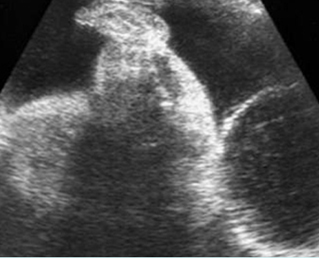
Fig 1: Long bone shortening Longitudinal scan of the thigh and leg: shortening of thigh and leg, compared with foot (achondrogenesis)
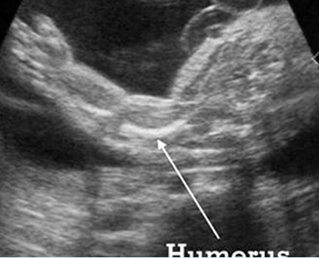
Fig 2: Short humerus Longitudinal scan of long bones: shortened but well ossified humerus of the fetus with Juene syndrome
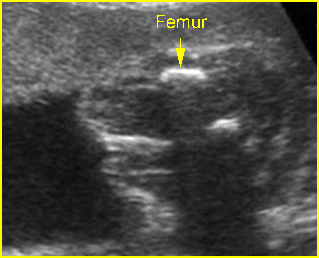
Fig 3: Micromelia in Thanatophoric dysplasia Severe shortenings of long bones (arrow) but normal ossification
Video clips of bone shortening
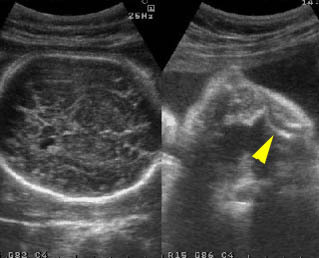
Thanatophoric displasia: Severe shortenings of the long bone (arrowhead) compared to the skull
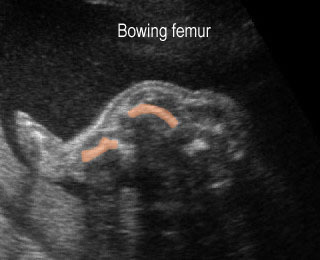
Long bone shortening : Severe long bone shortening with bowing and normal echogenicity in case of thanatophoric dysplasia

